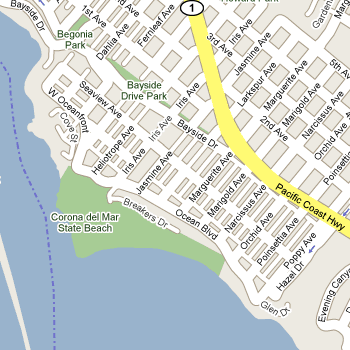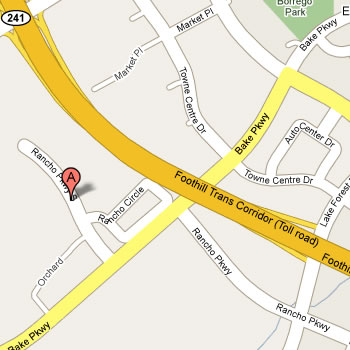MAGIC MOUNTAIN MAN 1/2 IRON DISTANCE RACE REPORT
Ron Saetermoe
My “A” race this year is Ironman Arizona on Sunday, November 22nd so I really wasn’t planning on beating myself up too much before then, but my good friend Larry (Lar Dog) Davidson talked me into competing in the inaugural Magic Mountain Man ½ Iron distance on Saturday, October 10th.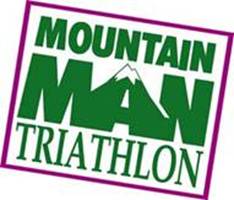
Since I’d be doing a long workout anyway for my Ironman training, the thought was “Hey, why not compete instead?” So I did.
First, let me say that Jonathan Pauley and Anneka Sakovich and the rest of the gang at Renegade Racing did an amazing job organizing this race. Jonathan, a great race organizer and quite an accomplished triathlete himself, knows how to put on a great show.
There were approximately 300 athletes competing, which is quite good for an inaugural race . . . especially one that was advertised as perhaps the toughest bike course for any ½ Ironman. That fact alone gave me pause.
It was great to have some friends sharing in my agony on Saturday. Gary Clendenin, Rene Rodarte (Triathica member) and Al Gaspari (Triathica coach) were all there, and incidentally, had great races as well.
The weather was near perfect. The skies were clear and the temperature quite comfortable all day, in the 70s. We did encounter a bit of wind on the bike course but nothing too drastic.
The swim was in the Castaic Lagoon and the water was a perfect 70 degrees. The water was calm as the sun came up just 15 minutes before race start.
The race was a “mass start” which simply means that all 300 athletes started at the same time. Since I’ve done a couple of Ironman races where there were over 2,000 athletes starting at the same time, this was cake.
I got off to a good start (I’m a swimmer first) in the 1.2-mile swim and headed directly for the triangle yellow buoy. A number of other athletes aimed for the round orange buoys but the line was more direct going straight for the triangle one. I saved a bit of time but didn’t have the benefit of having anyone to draft off of. However, once I turned the buoy I had company. A welcome sight, actually, because now I would be able to catch a draft.
For those of you that don’t know, drafting on the swim is quite legal. Drafting on the bike? Not so much.
Anyway, I was able to draft most of the way to the next triangle buoy but was on my own again on the way in. I felt like I was going quite fast and didn’t see too many athletes ahead of me. Ultimately, I finished 11th overall on the swim.
I exited the water feeling great, but apprehensive about the bike course. Al and I drove the course on Friday and had a good idea what we were in for, but riding the course on your triathlon bike is quite different than driving it in the comfort of Al’s Honda.
My 1st transition was quite slow which is a dramatic departure from my transition times in shorter races. This race was more of a “catered workout” and dress rehearsal for IMAZ so I executed my transitions as if I were doing an Ironman.
I’m starting the bike leg now and have the next 7.2 miles and 1,700 feet of climbing to look forward to. Al thought it would take about 45 minutes just to complete the first 7.2 miles and he was about right.
The downhill portions of the race were fast! According to Ergomo (my bike computer) I hit a top speed of 42.5 miles per hour. That’s flying. Because some of the downhills were so steep there were signs on the course reminding you that riding in your aerobars was not permitted. Again, a nice touch by the Renegade Racing guys.
The bike was two loops on some pretty rough roads. Some stretches had both potholes and ruts. You could dodge these quite easily on the uphill portions but the downhill portions were much more difficult.
As you know, most triathlons require you to be body marked prior to the race, with your age on your calf. As usual, I had a number of riders in my age group (M50-54) pass me on the bike as evidenced by their temporary calf tattoos. While my cycling has improved markedly over the past several years, it is still my overall weakness.
Anyway, I pressed on and wondered if I’d have any legs left to complete the 13.1-mile run. I have to say, I’ve never been happier to be off my bike. 54 miles (a little short of the traditional 56) and nearly 6,000 feet of climbing. Average cadence: 89. Average watts 186. Average speed 15.9 miles per hour.
Again, I took my time in transition and headed out on the run. At least the run would be fairly flat. The run course was out and back which I love because you can see all of the other athletes in front of you and behind you.
I knew Al and Gary were in front of me on the run. Both looked very strong.
About three miles into the run I encountered the first finisher, Kirk Nelson coming the other way. That is one fast dude! Shortly after that I passed Gary. Gary is in the M55-59 age group and is an excellent athlete. I don’t know Gary that well and as I passed him I asked him how old he was because I couldn’t tell because he had his compression socks on which covered his age. He told me he was 58 so I knew I wouldn’t have to compete against him. Good thing, too!
I felt better than expected on the run but my heart rate was running higher than I would have liked (about 170). Since I felt okay, I pressed on.
I passed a couple of guys in my age group on the run but had no idea what place I was in. I saw Al coming the other way at about mile six. He still looked strong and happy.
At about mile eight I decided to pull back a bit and try to get my heart rate down around 160 or so. As I did Gary passed me. “You go Gary!” I naturally let him go since we weren’t in the same age group. If he had been in my age group I certainly would have challenged.
At about mile 12 another guy in the M55-59 age group passed me. He was moving and had Gary in his sights. He challenged but Gary won the sprint to the finish coming in 1st. Way to go Gary!
For me, I kept looking over my shoulder to see if anyone would challenge me. No one did so I coasted to the finish. 5:52:01. Good enough for 1st! Way to go Ron!
The guys I passed on the run came by to congratulate me after the race. That’s one of the things I love about this sport – a lot of classy people.
Swim: 31:29 (11/199 = 5.5% overall)T1: 4:30 (112/199 = 56.3%) Told you I was slow!
Bike: 3:22:43 (60/199 = 30.1% overall) 15.9 MPH average
T2: 2:00 (84/199 = 42.2%) See what I mean?
Run: 1:51:17 (42/199 = 21.1%) 8.29 mile pace
Overall: 5:52:01 (33/199 = 16.6%)
Place: 1/12 (8.3%)
Al: 5:44:27; 7/36 (19.4%)
Gary: 5:48:26; 1/12 (8.3%)
Rene: 6:42:29; 6/12 (50.0%)
RUNNING OFF THE BIKE
Jarrett Pflieger
Legs like tree trunks and feet like bricks in your shoes. If you have ever done a triathlon, you know the feeling. One of the most uncomfortable parts of any triathlon is the sensation of running immediately after the bike portion of the race. Whether it is your calves, quads, hamstrings, or glutes . . . you hurt.
 This pain shouldn’t be a surprise. We spend anywhere from about 40 minutes for a sprint distance race, up to six hours or more for an Ironman race, getting our legs nice and fatigued. Then we expect them to perform a whole different movement utilizing many of the same muscles we already killed on the bike. The most successful triathletes are able to overcome this feeling and perform well running off the bike. So how is this possible?
This pain shouldn’t be a surprise. We spend anywhere from about 40 minutes for a sprint distance race, up to six hours or more for an Ironman race, getting our legs nice and fatigued. Then we expect them to perform a whole different movement utilizing many of the same muscles we already killed on the bike. The most successful triathletes are able to overcome this feeling and perform well running off the bike. So how is this possible?
There are some simple solutions that will make you perform better running after the bike. It will always feel weird and uncomfortable, but you can train your body to overcome the feeling and perform nearly as well as you would with fresh legs. Here are some things you can try.
Brick workouts
Brick workouts are a great way to get your legs used to the sensation of running off the bike. A brick workout is when you pair two or more workouts together. For instance, going for a ride, then doing a run workout after. Your body has an amazing ability to adapt, and if you repeatedly run after you cycle, you will get better at it.
When you do a bike/run brick workout, the run doesn’t necessarily have to be long. There are athletes that have great success running just a small distance after every bike workout. Get in the habit of running, even if it’s just for a few minutes each and every time you get off the bike. You can even create variations to really challenge yourself, like doing a bike/run/bike/run brick where you alternate back and forth between the two events for two or more cycles. This type of training should pay dividends on race day, but use it sparingly.
Resistance training
The main reason it is so difficult to run after cycling is muscle fatigue. By resistance training, you can go faster while using less energy, delay the onset of muscle fatigue, and recover faster when you do get fatigued.
Most endurance athletes often overlook resistance training, but if you want to be successful in the sport, you really need to incorporate some into your training. Consult a personal training or coach for advice in this area.
Pacing
No matter how much you train for transitioning from bike to run, you will not be able to run very fast if you go too hard on the bike. The only way you can know how hard you can push the bike, while still being able to run well, is by practicing.
During training, experiment with different ride lengths and intensities and see how your run is affected. If you know your race distance, practice riding that distance on similar terrain then running close to race distance after to see how your body responds. If you have been incorporating brick workouts for a while and your legs still quit on you, you may be pushing too hard on the bike.
Cadence
There is still much debate when it comes to cadence (RPM) on the bike. Some very successful athletes have very different opinions on what is best, high cadence (90 rpm and above) or lower cadence (below 90 rpm). Personally, I find that the lower my cadence, the more I tend to hammer down on the pedals and burn out my legs. On the other hand, when I concentrate on keeping my cadence high, especially during climbing, my legs feel fresher off the bike.
My bike times may be a bit slower, but I can more than make up for it in the run when my legs feel good. It’s all a fine balance, one you have to discover for yourself in training.
Hopefully some of these little tips will help you become a better runner off the bike. Feel free to play around and see what works for you. Contrary to popular belief, there is really not an exact science for triathlon training. Experiment to find what works for you body and run with it (pun intended). A good triathlon coach can also help you in this area.
HYDRATION TIPS FOR TRIATHLETES
Alyson Wolfe
 Water. We all know how essential it is to athletes, but how much is enough and when should we drink it? How will it affect our performance?
Water. We all know how essential it is to athletes, but how much is enough and when should we drink it? How will it affect our performance?
The answers to some of these questions are complicated and can be critical to the endurance athlete. Many factors determine the proper amount, including your weight, body chemistry, fitness condition, diet, and the environment in which you plan to compete in.
Dehydration in a competition can be very serious and inadequate water consumption can be physically harmful. A loss of 2% of body weight due to sweating can lead to a drop in blood volume. When this occurs, the heart works harder in order to move blood through the bloodstream. Pre-hydration and re-hydration are vital to maintaining cardiovascular health, proper body temperature and muscle function.
All exercisers can increase performance, delay fatigue and muscle pain by staying properly hydrated. Athletes are more prone to suffer symptoms of dehydration. However, drinking 12 – 16 ounces of water one to two hours before exercising helps to pre-hydrate before an event.
You can also get a very good idea of how much you need to re-hydrate by weighing yourself before and after your workouts. Any weight decrease is probably due to water loss (sorry, but you didn’t just lose two pounds of body fat). If you have lost two or more pounds during your workout you should drink 24 ounces of water for each pound lost.
Another regimentation is to consume three to six ounces of water for every 20 minutes of exercise. Keep in mind that each person’s sweat rate is different; slightly less is required for smaller athletes in mild environmental conditions; more, for larger and competitive athletes at higher intensities in warmer environments.
Endurance athletes may need to drink fluids containing sodium, which you lose through perspiration. These are athletes who are performing at a high intensity for 90 minuets or more. During normal training it is not necessary to replace losses of sodium, potassium and other electrolytes during exercise since you’re unlikely to deplete your body’s stores.
Researchers have found that many sports drinks lack enough sodium to do much good, but some can be better than none. Before a long workout or an event, consider consuming extra sodium with meals and snacks. Those who are competing in extreme conditions over five or six hours, such as an Ironman or ultra-marathon, you will want to add a complex meal replacement drink with electrolytes.
Many commercial sport drinks are effective and contain water, sugars, and electrolytes. However, most commercial sport drinks contain just slightly less than the amount in your average soft drink and juice. You can make your own sport drinks by diluting two parts of a sugared soft drink with one part water and adding salt, about 1/8 teaspoon per quart.
The best advice is just to drink plenty of fluids on all days, training or not. Do not wait until a competition to work on hydrating yourself adequately. Drink, drink, drink and do not rely on thirst to regulate your fluid intake.
IRONMAN RACE PHASE
Ron Saetermoe
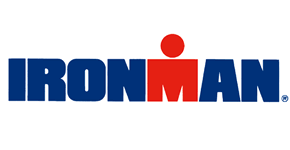 For many, the ultimate physical challenge is completing an Ironman triathlon. I have been competing in triathlon for 26 years now but didn’t attempt my first Ironman until Coeur d’Alene last year (I also did Ironman Arizona last year).
For many, the ultimate physical challenge is completing an Ironman triathlon. I have been competing in triathlon for 26 years now but didn’t attempt my first Ironman until Coeur d’Alene last year (I also did Ironman Arizona last year).
Why did I wait so long? Simple. I had other priorities (family and work) and didn’t want to just “complete” it I wanted to “compete” in it.
Well, I’ve got two under my belt now and will be attempting my third on Saturday, November 22nd (tune in to www.ironmanlive.com for race updates) which means I’m into my “race phase” training now.
As part of race phase I did the inaugural Magic Mountain Man ½ Ironman on Saturday, October 10th (see race report below).
Basically “race phase” is the part of the year where you increase your training volume and intensity. This final 9-week period prior to your race is critical. No more blowing off workouts and no more slacking.
At Triathica, we break the training year up into five, 9-week phases. Adaptation, base, build, race and taper. What about the other seven weeks? We call that the “cross-training” phase.
Since I raced on Saturday I took Sunday off. Today (I’m writing this on Monday the 12th) I put my wetsuit on and swam in the Endless Pool. My sets had me at 1:35/100 yd. pace, 1:31/100 yd. pace, then 1:25/100 yd. pace. Great workout!
We’re just five weeks out from race day. The next three weeks will include some heavy volume followed by a 3-week taper. These next three weeks is when you really gain fitness in preparation for your race. In addition, since the workouts are so challenging they build confidence for race day as well.
I’m embracing these weeks and have my sights clearly set on November 22nd. I don’t have any hopes of getting a Kona slot there but would like to break my lackluster performance of last year by over an hour. My goal? 11:15:00.
I figure if I can hit 11:15:00 and manage to keep my training up I’ll actually try to get a Kona slot at IMAZ next year.
Only five more weeks. It will be here before I know it.
Cheers!
TRIATHICA NEWBIE CAMP
Triathica Newbie Camp – November 14th & 15th
Overview
The Triathica Newbie Camp is a comprehensive weekend training program designed to teach the athlete how to properly prepare and compete in a sprint distance triathlon. This is a highly interactive and participative camp, so come prepared to learn, sweat and have fun!
Who Should Come?
Anyone interested in competing in their first triathlon, or those who simply want to learn more about the sport and improve their previous performance.
What’s Covered?
Literally everything you need to know to compete in a sprint triathlon. You will also be able to interact with the coaches to pick their brains about any aspect of the sport.
What’s Included?
Eight hours of classroom/discussion and four hours of actual swim/bike/run training.
What Else Do I Get?
In addition to the great training and workouts, you also get: a 9-week sprint-distance training plan, three training zone assessments, a swim analysis DVD, a Triathica race singlet and lunch on Saturday. In addition, you are invited to attend all Triathica group swim/bike/run workouts. All a $860.00 value!
Dates/Times/Location
The camp takes place at the Triathica Training Center
Saturday, November 14th 8:00 a.m. – 4:00 p.m.
Sunday, November 15th 8:00 a.m. – 12:00 p.m.
What Do I Bring?
You should come prepared to swim/bike/run. Therefore, you should bring all of the gear you will need to actually compete in a triathlon. Visit www.triathica.com and go to “Information” “Resources” “Triathlon Checklist” for details on what to bring with you.
Coaching Staff
Ron Saetermoe is the head coach and USAT certified triathlon coach. Ron has been in the sport of triathlon since 1983 and has completed over 100 races. Jarrett Pflieger is the Triathica facility director and USAT certified triathlon coach.
What’s Triathica?
Triathica is one of the few training centers in the world, and the only one on the west coast, dedicated to the sport of triathlon. Triathica provides the equipment and know-how to help athletes compete in their first triathlon, or their 100th.
Athlete Fitness
You should be in good physical condition and have no medical condition, or impairment, that might prevent you from participating in strenuous physical activities. We strongly recommend that you consult your physician prior to enrolling in this camp.
Contact Triathica Training Center
26475 Rancho Parkway South
Lake Forest, CA 92630
949.273.6201
info@triathica.com
www.triathica.com
Activity Approximate Times
Saturday:
Triathlon Basics 8:00 a.m. – 9:00 a.m.
Triathlon Swimming 9:00 a.m. – 10:00 a.m.
Swim 10:00 a.m. – 11:30 a.m.
Lunch 11:30 a.m. – 12:00 p.m.
Triathlon Rules 12:00 p.m. – 12:30 p.m.
Triathlon Training Plans 12:30 p.m. – 1:30 p.m.
Triathlon Cycling 1:30 p.m. – 2:30 p.m.
Bike ride 2:30 p.m. – 4:00 p.m.
Sunday:
Triathlon Flexibility 8:00 a.m. – 8:30 a.m.
Triathlon Resistance Training 8:30 a.m. – 9:00 a.m.
Triathlon Transitions 9:00 a.m. – 10:00 a.m.
Triathlon Running 10:00 a.m. – 11:00 a.m.
Run 11:00 a.m. – 12:00 p.m.
| What’s Included | Value |
| 8 hours of classroom instruction 4 hours of swim/bike/run training 9-week training plan Personalized swim video 3 training zone assessments Triathica race singlet Lunch Saturday Weekly swim/bike/run workouts TOTAL VALUE YOUR COST (55% off!) |
$240.00 $120.00 $170.00 $125.00 $120.00 $75.00 $10.00 $0.00 $860.00 $390.00 |
Sign up at Active.com here.
FREE GROUP WORKOUTS (Week of October 12th)
All of our group workouts are free to members and non-members, so come on out!
We want everyone to enjoy our group workouts but we should clarify the intent. The intent of the group workouts is to “workout.” Yes, it includes a social element. Yes, your Triathica host is happy to give you tips. But please be aware that everyone there is attempting to get a workout in at his or her own pace. If we all go at the slowest person’s pace many people won’t be getting in a proper workout. We will attempt to pair you up with another athlete so you’re not left alone.
Week of October 12th
Event: Group Swim
Place: Triathica flag at Big Corona near the lifeguard station next to the jetty
Day: Wednesday, October 14th
Time: 5:30 p.m.
Planned Workout: 1 – 3 loops around the buoys
Event: Group Ride
Place: Triathica HQ
Day: Saturday, October 17th
Time: 7:00 a.m.
Planned Workout: Santiago Canyon Loop
Event: Group Run
Place: Triathica HQ
Day: Sunday, October 18th
Time: 7:00 a.m.
Planned Workout: Whiting Ranch Loop
OC TRI RACE REPORT
Jarrett Pfleiger
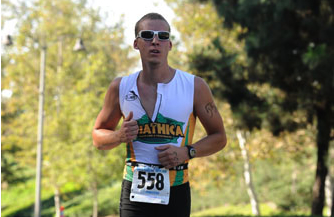 The Orange County Triathlon in 2008 was my first ever triathlon, so I was excited to see how I have improved over the last year. This would be my first time ever repeating a race in my young triathlon career. My training was anything but consistent over the last year, but I was confident that I had improved a little in fitness and a lot in knowledge, pacing, and race strategy, not to mention the quality of equipment I was using. Last year I rode the course on an old Fuji road bike with running shoes and no foot straps.
The Orange County Triathlon in 2008 was my first ever triathlon, so I was excited to see how I have improved over the last year. This would be my first time ever repeating a race in my young triathlon career. My training was anything but consistent over the last year, but I was confident that I had improved a little in fitness and a lot in knowledge, pacing, and race strategy, not to mention the quality of equipment I was using. Last year I rode the course on an old Fuji road bike with running shoes and no foot straps.
A few months out from the race on September 27th, I decided to dedicate my training and make this my “A” race and last one of the season. For a month, I was doing very well, then we started getting busier here at Triathica (definitely a good problem to have) and I had less and less time to train. About a month out from the race my training routine fell apart and I really only trained here and there when I could. I was still pumped for the race and excited for all the Triathica members who would be racing that weekend for the first time.
The night before the race I actually felt the best I ever had. My expectations were not high for the race so I was able to relax and have fun the next day. I got the best sleep I ever have before a race.
For breakfast I powered down a few snickers marathon bars that I got the day before at the expo. Those things are great! They literally taste like candy bars. I loaded all my stuff up in a borrowed truck (can’t really fit a bike in my Miata) and headed over to the race. Got to transition a little early and found a pretty good spot in transition. I brought my wetsuit just in case, but I thought it would be too warm to wear it. This turned out to be correct.
I walked around transition a bit and chatted with a few Triathica members I found. I felt really relaxed which is weird for me. I’m always pretty jacked up on race morning. One thing I was worried about was my goggle situation. I have a pair of dark and clear goggles. Clear goggles were the obvious choice for an early race start, but they got a little warped and I was worried about leakage. I brought both pairs down to the water and tested the clear ones. They seemed to hold up fine so I went back to my T1 area and put away my dark goggles. Probably something I should have tested days ago, live and learn.
It was very different not being the first wave since I’m usually in with the pros and the 29 and unders who normally start first. This time I was in the fifth wave, which was cool since I actually got to watch other people start.
I’m usually cautious on the swim start and try to stay away from the congestion. I’m gaining confidence in my swim so I decided to just go for it. When the horn blew I sprinted out in front and did a few dolphins. I was in front for probably the first minute of the swim until I settled into a good pace. I started to see people pass me, but I just stayed on my pace and tried to follow some feet.
After a while I started drifting to the right towards the course markers. Once I got right up next to them I adjusted and just used them to sight with until I hit the big buoy out in the middle of the lake. The rest of the swim went pretty smooth and after I rounded the first buoy, I started passing people in caps that were a wave or two ahead of me. Once I rounded the last buoy, I started seeing caps from the 2nd wave. I was sure I had a pretty good swim.
The bike portion went pretty well for me. I’ve had a problem in the past riding at too low a cadence and hammering too hard, wearing my legs out very quickly. This race I was concentrating on keeping my cadence high and spinning up the hills instead of hammering. I passed a lot of people on the bike and didn’t get passed all that much. There were a few guys I was going back and forth with almost the whole course. Guy in the pink jersey, you know who you are.
When I was nearing T2, I started getting ready to dismount and tried to move a Gu packet from my shorts to the back pocket in my tri top. Instead or reaching back and slipping it in the pocket, I slipped it under my race belt and it fell, skidding along the ground behind me. I didn’t panic because I felt pretty good and had downed a bottle full of Gatorade on the bike. The Gu was just for emergencies anyways.
I got off the bike feeling the best I’ve ever felt for the run. The first mile or two I felt really good. I held back a little because I knew what lay ahead. Even though I held back, once I hit those hills, I fell apart. I started getting these sharp pains in my lower quads and left hamstring. I had to walk/run up the steep hills and even walking was painful. I had no idea what was going on, but I kept thinking about my Gu packet sitting on the bike course by transition. It could have been a nutrition problem, but my body felt good, just my legs were killing me.
I struggled up Vista del Lago and once I got the top, my legs had had enough. My lower quads were searing and I felt like I needed to stretch them out. I lifted my left ankle up so I could grab it and stretch the quad. BAM! My hamstring tightened and I promptly fell to the ground, rubbing the grapefruit size ball on the back of my leg and trying to stretch it out. After a few minutes of rubbing and stretching I was able to straighten my leg. It sucks to watch people pass you, as you lay helpless on the ground. I think one or two people asked if I was OK, but everyone else was distracted with their own pain.
When I got up, I felt a little better as I started hobbling along. It still felt like I was going to cramp any minute, but it wasn’t as painful. I started to pick up speed and passed a lot of people that had passed me. One guy I ran past offered me some extra drink he had in his race belt. I thanked him and guzzled down a bottle in about two seconds. I’m not sure it helped, but it gave me the mental boost I needed.
I continued on and started to pick up speed on the downhills when I started having pain again. It was weird because the pain was only below my shorts, so I started moving them around a bit. It worked and the pain subsided temporarily. I came to the conclusion that my strategy of wearing double layers for the extra compression actually was cutting off circulation in my leg. I was almost done with the race so I just powered through it for the last mile.
The fact that the last half-mile of the course was all downhill made my day. I just cruised to the finish line and from my watch it looked like I beat my time last year by about 15 minutes.
I stuffed my face full of nutrition, got a sweet massage, and talked to bunch of other people about their race. I hated when people asked how my race went, I didn’t like explaining I was an idiot and died on the run, which could have been prevented. Oh well, I still had fun and there is always next year.
I ended up getting 18th in the 25-29 age group and finished in 2:33:13. I beat my time last year by about 15 minutes and lost a ton of time to cramps. Needless to say, I was very happy with my performance considering. Now it’s time to dedicate my training this off-season and come back with a vengeance next year.
OCEANSIDE COMPUTRAINER
Jarrett Pfleiger
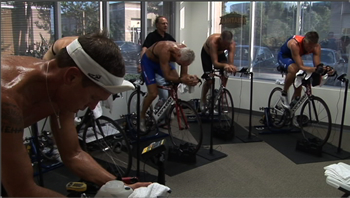 Calling all athletes competing in the Ironman California 70.3 in Oceanside on March 27th, 2010. If you are planning on doing well in this race, you need to know the course. Unfortunately, the majority of the bike course is on Camp Pendleton marine base and cannot be accessed except for race day. If you want to get familiar with the course and be successful on race day, we might have a solution for you.
Calling all athletes competing in the Ironman California 70.3 in Oceanside on March 27th, 2010. If you are planning on doing well in this race, you need to know the course. Unfortunately, the majority of the bike course is on Camp Pendleton marine base and cannot be accessed except for race day. If you want to get familiar with the course and be successful on race day, we might have a solution for you.
At Triathica, we have a room full of CompuTrainers that can simulate real courses around the world. You bring in your own bike, we set it up on the trainer, and the computer does all the work. Well you still have to work hard, but the CompuTrainer will adjust the resistance based on the course profile to make it feel like you are actually riding the course. You will have to shift gears and everything just like you were riding.
There are over 100 courses loaded in our system right now, and 70.3 Oceanside is one of them. We want to give everyone a chance to come in and ride the course to get a taste of what they can expect on March 27th. The CompuTrainer also measures watts, heart rate, cadence, and a lot of other data. If that means nothing to you, don’t worry. If you like analyzing numbers, these things are a techie’s dream.
We will be having a MultiRider ride of the course on Sunday, October 16th at noon. There are only six spots, so don’t wait to reserve your spot. Email Jarrett@triathica.com or call 949.273.6223. If you would like to come on another day to ride yourself or with a few friends, let us know.
COMMON SWIM STROKE FLAWS
Jarrett Pfleiger
 The swim is the one thing that strikes fear into most beginner triathletes. Many veteran triathletes still struggle to be competitive in this event also. The swim is a humbling experience for many beginning swimmers. Even the fittest athletes will be very winded after only a few laps in the pool if they have bad form. The freestyle stroke is similar to a golf swing in that you could have all the strength and power in the world, but if you have poor technique, you will not be very successful.
The swim is the one thing that strikes fear into most beginner triathletes. Many veteran triathletes still struggle to be competitive in this event also. The swim is a humbling experience for many beginning swimmers. Even the fittest athletes will be very winded after only a few laps in the pool if they have bad form. The freestyle stroke is similar to a golf swing in that you could have all the strength and power in the world, but if you have poor technique, you will not be very successful.
Swimming isn’t natural for humans and it takes more practice to master technique as opposed to cycling and running. Once you do master the technique, you will have a big advantage over other athletes who have not taken the time to refine their stroke. Even though there are many parts of a swim stroke that can be off, there are a few major mistakes most people make that, when corrected, can make a noticeable difference in swim speed and energy expenditure.
Next time you go to the pool, consciously think about your stroke and try to figure out if you make any of these mistakes.
Head position:
This is, by far, the most common mistake I see in athletes. The good news is that it’s also the one that gives the most benefit when fixed. While swimming, people tend to lift their heads too much, especially when breathing. When your head is tilted up in the water, you hips will drop lower in the water automatically. When your hips and legs drop in the water, you will create more surface area and will be plowing through the water instead of slicing through it like a torpedo.
Try to keep you head and neck in a neutral position, just like if you were standing straight up on land. Your face should be pointed to the bottom of the pool (ocean, lake, etc.) and your eyes should be looking ahead. You do need to see where you’re going, but look with your eyes, not your head. Keeping your head down will make your body more hydrodynamic and will help you go faster while expending less energy.
Body roll:
The old school way of swimming was to swim with your chest and stomach pointing down at all times and use your arms and legs to propel you. This is a recipe for shoulder problems, rapid fatigue, and slow swimming. Your body is most hydrodynamic while on its side, so incorporating more body roll into your stroke could work wonders.
When you take a stroke and extend your lead arm, try rotating on your side. When your right arm is extended, your chest will be pointing left. A complete 90-degree rotation isn’t necessary, but rotate as much as you can while still feeling comfortable. This should lift your shoulder out of the water and will make it easier to take your next stroke. When you do take your next stroke, you will rotate or “roll” to the opposite side. Just imaging you are on a giant BBQ skewer while you roll back and forth. This does not sound pleasant, but it is a good example of rotating on an axis.
This rotation will allow you to engage your core muscles, lats, and hips to generate more power and conserve your arms and shoulders. It will also make it easier to breath without lifting your head and causing your feet and hips to sink. Look up a few side-kick drill variations to help with feeling balance in the water on your side.
Kicking:
Focusing on kicking is not as necessary as some may think. Relatively speaking, kicking does not apply that much forward force to swimmers and uses a lot of energy. The last thing a triathlete wants to do is expend energy, especially in the legs, during the first portion of the race. If you do kick, make sure you are kicking correctly. I only kick for balance purposes and get little, if any, propulsion from my feet.
A lot of times I see swimmers’ legs separating and flailing around, kicking way too much, and bending too much in the knees. All this does is create additional resistance in the water. Keep kicks short, legs close together, knees only slightly bent, and ankles limp. Don’t point your toes unless you would like some calf cramping later in the swim.
Glide:
The swim should be smooth, fluid, graceful and almost easy compared to the pounding of the run and burn on the bike, but all too often people struggle most in the swim and are constantly battling the water. Don’t battle the water by constantly windmilling your arms, but glide through it like a fish.
After every stroke, pause for a moment or two with arm extended while on your side. With each stroke you also create forward momentum, which is wasted if you hurry to take another stroke before gliding a bit. This is free speed; take advantage of it and save energy.
Hopefully you will be able to recognize if you are making some, or all, of these mistakes. Don’t worry; these are not impossible to fix with the right drills and some practice. A good coach would be even better since they will be able to see what you cannot. Stop logging more miles in the swim, ingraining bad technique in your brain and muscle memory. Make the decision today to fix your stroke and become a whole new swimmer.
Here at Triathica, we have an Endless Pool that is perfect for swim coaching and video analysis. If you are serious about improving your stroke, swimming faster, and working less, give us a call to see how some swim coaching could take your racing to the next level.
BEGINNER TRIATHLETE CAMP
Jarrett Pfleiger
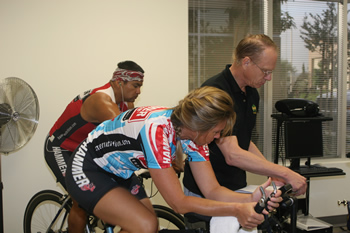 Thinking about doing a triathlon? Already done one, but want to know what you need to do to get better? Triathica is in the process of creating a triathlon camp for beginners that will help you reach your goals and give you the knowledge you need to not only finish, but also be competitive and have fun doing it.
Thinking about doing a triathlon? Already done one, but want to know what you need to do to get better? Triathica is in the process of creating a triathlon camp for beginners that will help you reach your goals and give you the knowledge you need to not only finish, but also be competitive and have fun doing it.
A Triathlon is one of the best ways to get and stay in shape. Once you sign up for a race, it is a constant motivator to keep you training hard. Your results don’t lie; it is the perfect accountability partner.
The camp will more than likely be held on a weekend and will cover topics such as swimming, cycling, running, transitions, race strategy, nutrition, safety, equipment, training, and much more. Stay tuned for more information about our beginner triathlete camp.


